CATALYST
DENVER MUSEUM OF NATURE & SCIENCE ONLINE MAGAZINE
6 Marvelous Moths from the Museum’s Entomology Collection
Stunning Moths You Never Knew You Needed to See
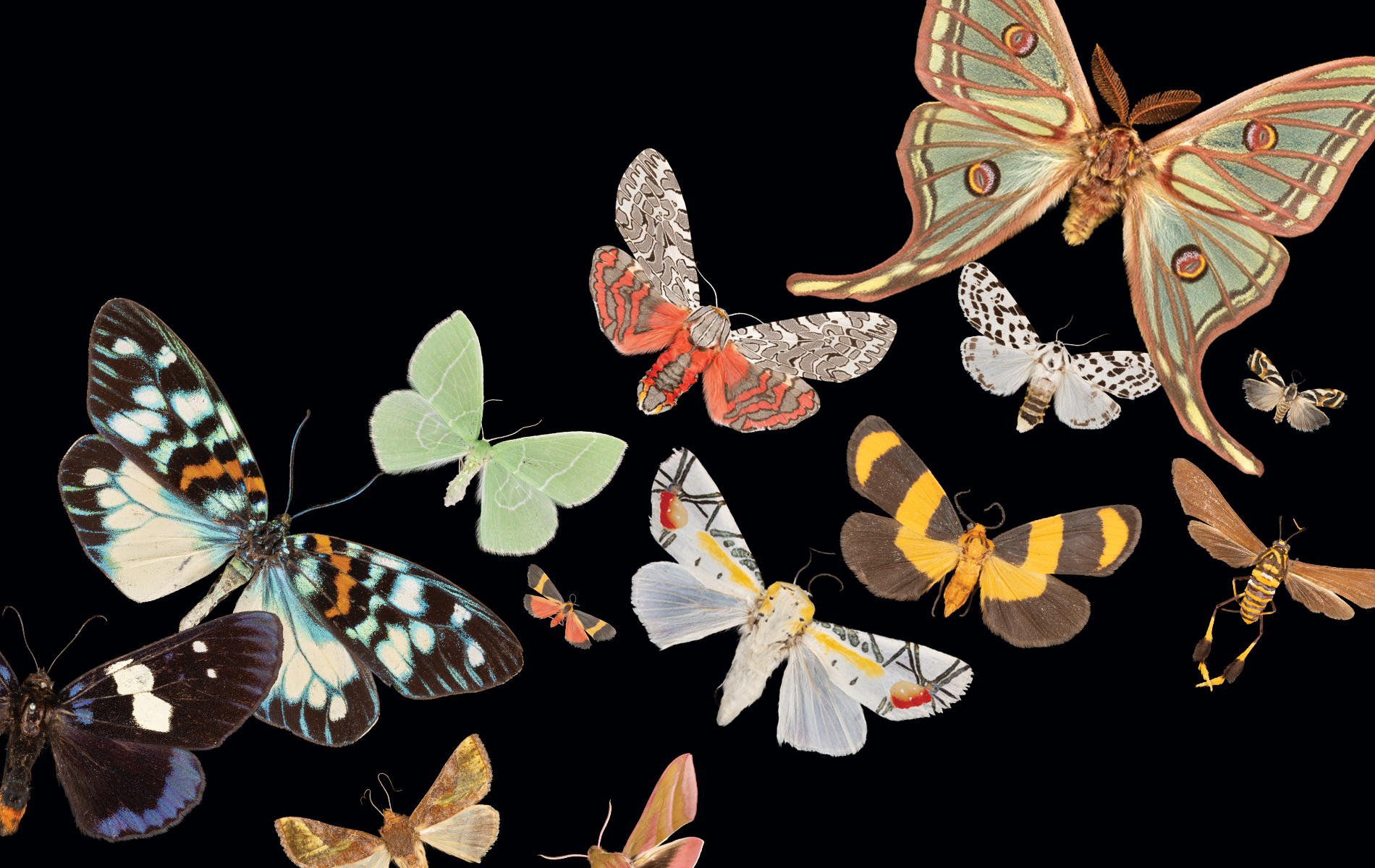
A selection of colorful moths from the Denver Museum of Nature & Science's Entomology Collection. (Photo/ Rick Wicker & Gina Marzulla)
The Denver Museum of Nature & Science entomology collection has over one million specimens of insects, from right here in Denver City Park to environments all over the world. One of the collection’s strengths is a worldwide moth and butterfly — or Lepidoptera, if you’re using their scientific group name — collection.
While many people may think of moths as gray, night-flying creatures — like our local celebrity miller moths, anyone? — this group of insects are incredibly diverse. Found all over the world, the order Lepidoptera comprises some of the largest insects to the some of the smallest. There are moths of every size, shape and color, and definitely rival butterflies with their beauty and appeal. Butterflies, in fact, are actually just a lineage of moths that have evolved to fly during the day.
The moths pictured on this edition’s cover of Catalyst were selected by Genevieve Anderegg, assistant collections manager of invertebrates, as some of her favorite species in our collections. Here are six that we have highlighted for you to learn more about:
“Spanish moon moth” — Graellsia isabellae, Family Saturniidae
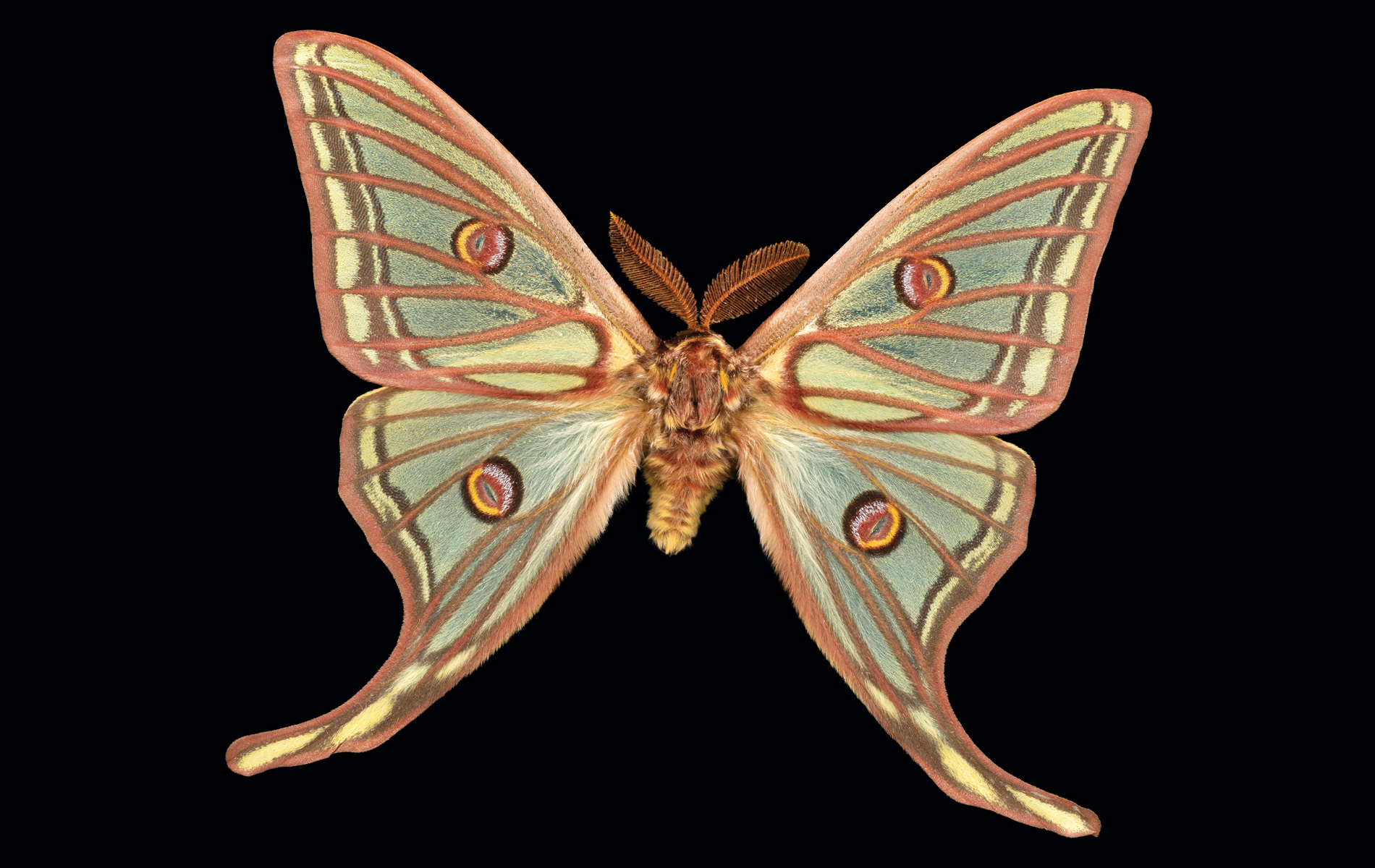
The Spanish moon moth is native to cold, high-altitude forests in the Pyrenees mountains on the Iberian Peninsula. Found in elevations from 500 to 1800 meters, this species exists in several isolated populations high in the mountains as a relic from the last ice age. Graellsia isabellae adapted to conditions when Europe was much colder, and as the glaciers retreated and the environment warmed, the range of this species decreased, until it was left in the cold mountains where conditions are stable and ideal. Each year in the summer, Spanish moon moths mate and lay their eggs on pine trees. Eggs hatch and the caterpillars eat voraciously for less than two months, before going into their cocoons under leaves on the ground for the entire winter. In the spring, the adults emerge but they don’t live that long as moths — only a few weeks. Cool fact about Spanish moon moths? Adults don’t have functional mouthparts or a digestive system, and live only on the fats they stored as a caterpillar.
The Spanish moon moth on the cover (ZE.141160) was collected in Catalonia, Spain in May 1988, and can be identified as a male by the feathery antennae and long tails on the hindwings.
“Picasso moth” — Baorisa hieroglyphica, Family Erebidae
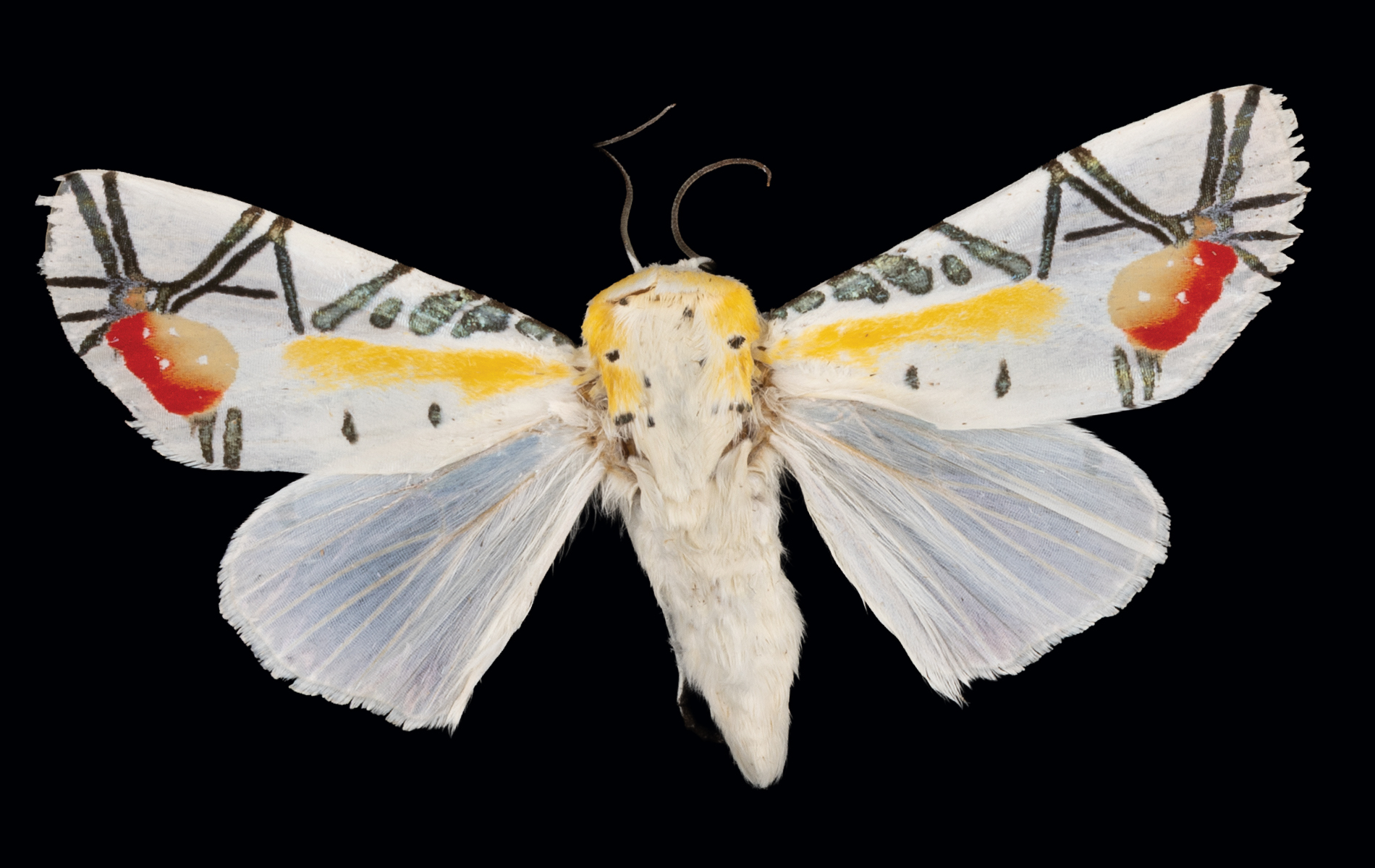
The Picasso moth on the cover (ZE.2965) was collected in West Sumatra, Indonesia, in January 1994. (Photo/ Rick Wicker)
You may have seen pictures of this stunning “Picasso moth” online and in artwork; its dramatic primary-colored ornamentation is reminiscent of a Picasso painting. This species is found from northeastern India down into southeast Asia. When this species was first described in 1882, it was first given the species name “hieroglyphica” for the colorful and eye-catching pattern of stripes and spots on its forewings that resemble Egyptians hieroglyphs.
Not much, however, is known about the Picasso moth’s life cycle or natural history. We don’t know what it looks like as a caterpillar or what plants the caterpillars eat to metamorphosis into the adult. There is always more for science to discover — not only new species, but also facts about species we already know!
The Picasso moth on the cover (ZE.2965) was collected in West Sumatra, Indonesia, in January 1994.
A species of “burnet moth” — Erasmia pulchella, Family Zygaenidae
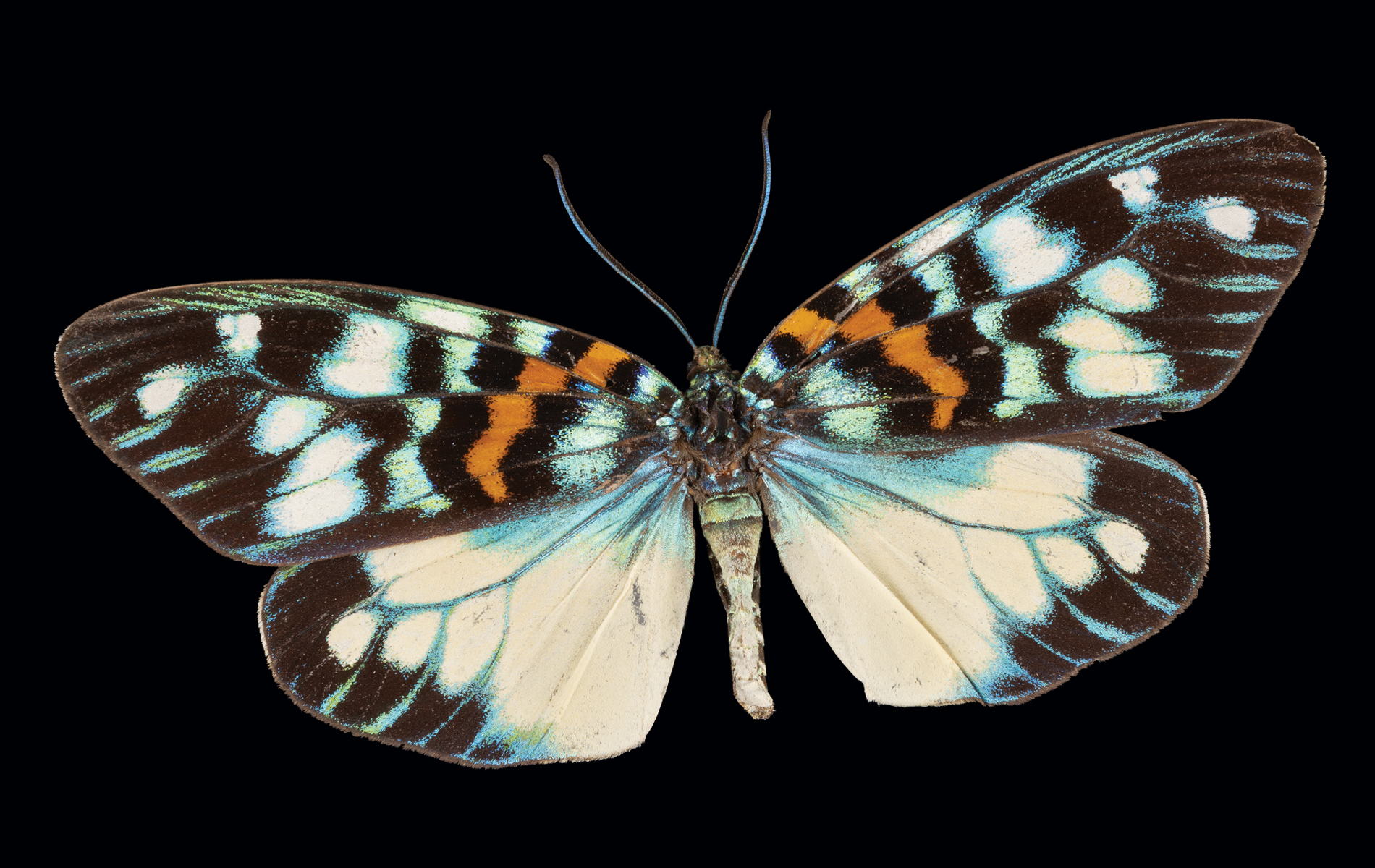
The specimen on the cover (ZE.2965) was collected in China, and is a specimen from the founding donation of our Entomology collection, gifted to the museum by John T. Mason in 1918. (Photo/ Rick Wicker)
This species of burnet moth is an excellent example of aposematic coloration — advertising to predators that this moth is full of toxic chemicals and not worth eating. From eggs, caterpillar to adult, all life stages of this insect are toxic to predators because their bodies contain hydrogen cyanide. The adult moth can also release toxic chemical foam from its neck as a defense mechanism. This moth needs this chemical defense because it flies during the day and drinks nectar from flowers, just like a butterfly.
The specimen on the cover (ZE.2965) was collected in China, and is a specimen from the founding donation of our Entomology collection, gifted to the museum by John T. Mason in 1918.
“Texas wasp moth” — Horama panthalon, Family Erebidae
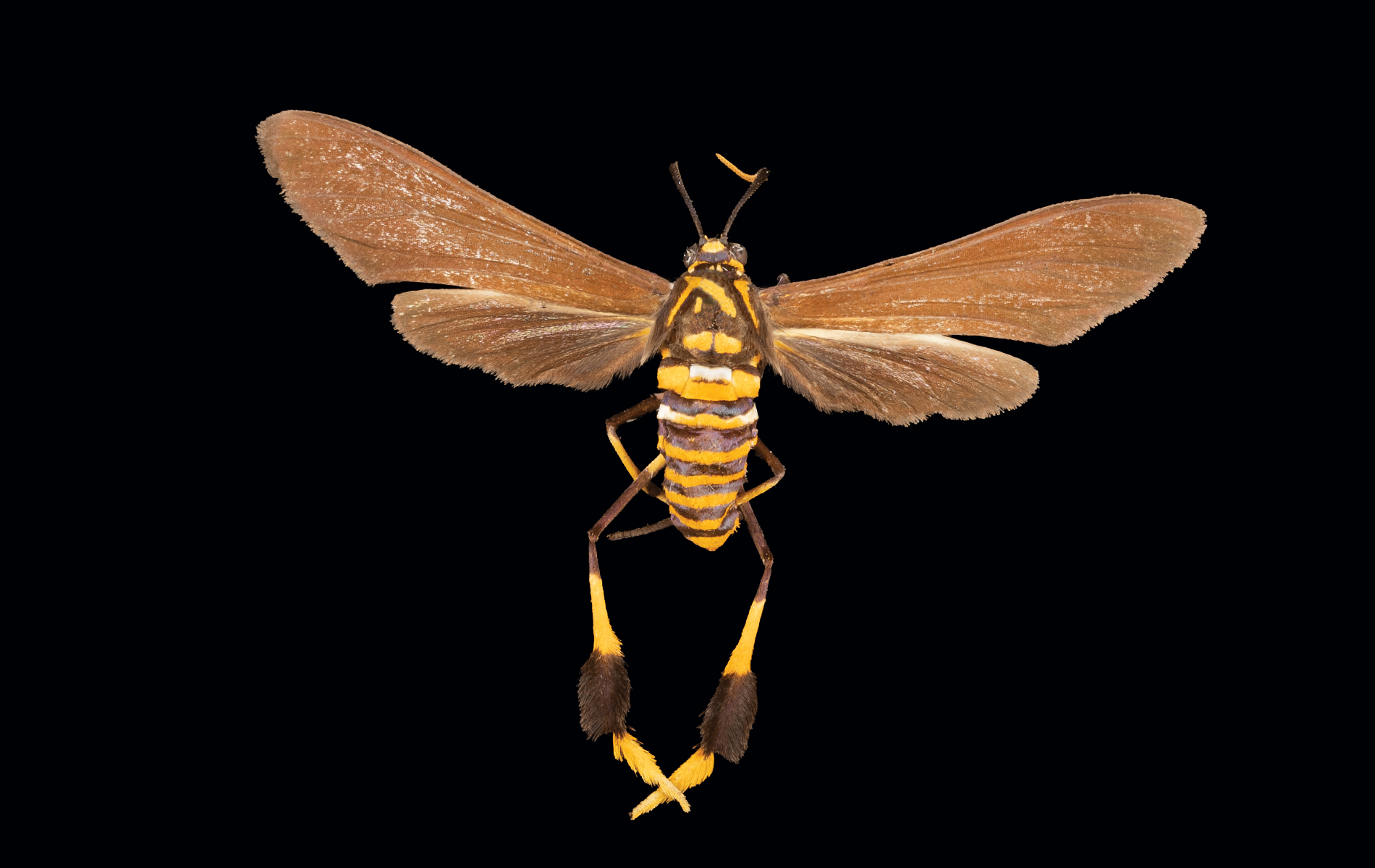
The specimen on the cover (ZE.109311) was collected in Kickapoo Cavern State Natural Area in Texas, in October 1993. (Photo/ Rick Wicker)
The Texas wasp moth is a fantastic example of mimicry. The adults have evolved to look like paper wasps to deter predators from eating them. As the name suggests, this moth can be found in southern Texas, as well as Mexico, the Caribbean and South America. While the paper wasp it mimics can sting when threatened, the Texas wasp moth cannot sting and is quite beautiful and safe to observe up close when they land on flowers.
The specimen on the cover (ZE.109311) was collected in Kickapoo Cavern State Natural Area in Texas, in October 1993.
A species of “bird dropping moth” — Spragueia magnifica, Family Noctuidae
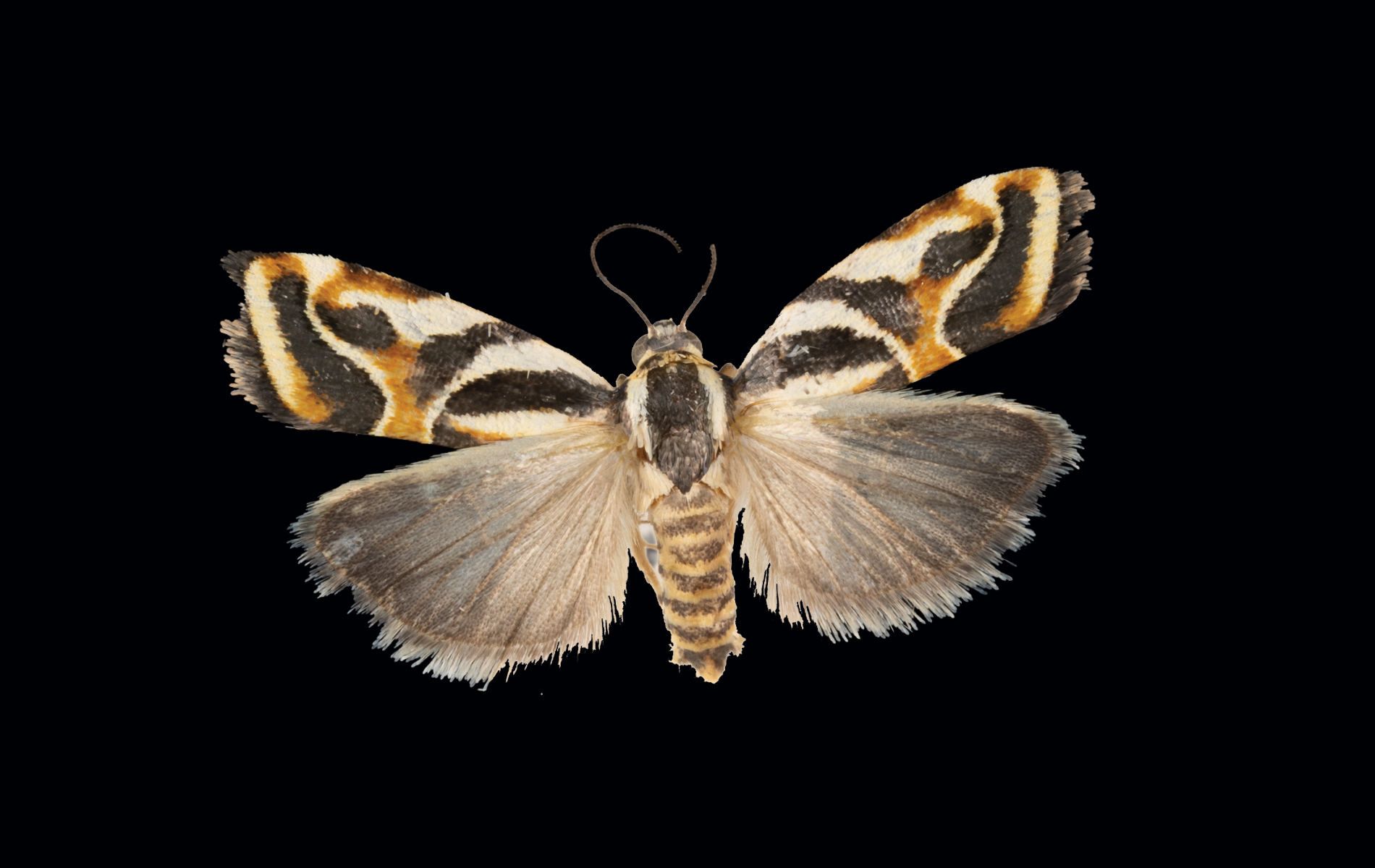
This species is found in the southwestern United States, and this specimen (ZE.141172) was collected in Cochise County, Arizona in August 2024. (Photo/ Rick Wicker)
Spragueia magnifica is one of the vast majority of insect species that do not have a common name. We call this species, however, a “bird dropping moth” because it is in a subfamily of Noctuidae that has evolved to convincingly mimic bird poop. Moths like Spragueia magnifica are often patterned yellow, gray and white so that when they perch on vegetation with their wings held together, they look just like bird poop. They are also often slightly shiny and iridescent which makes them look wet.
This species is found in the southwestern United States, and this specimen (ZE.141172) was collected in Cochise County, Arizona in August 2024.
“Single-lined emerald” — Nemoria unitaria, Family Geometridae
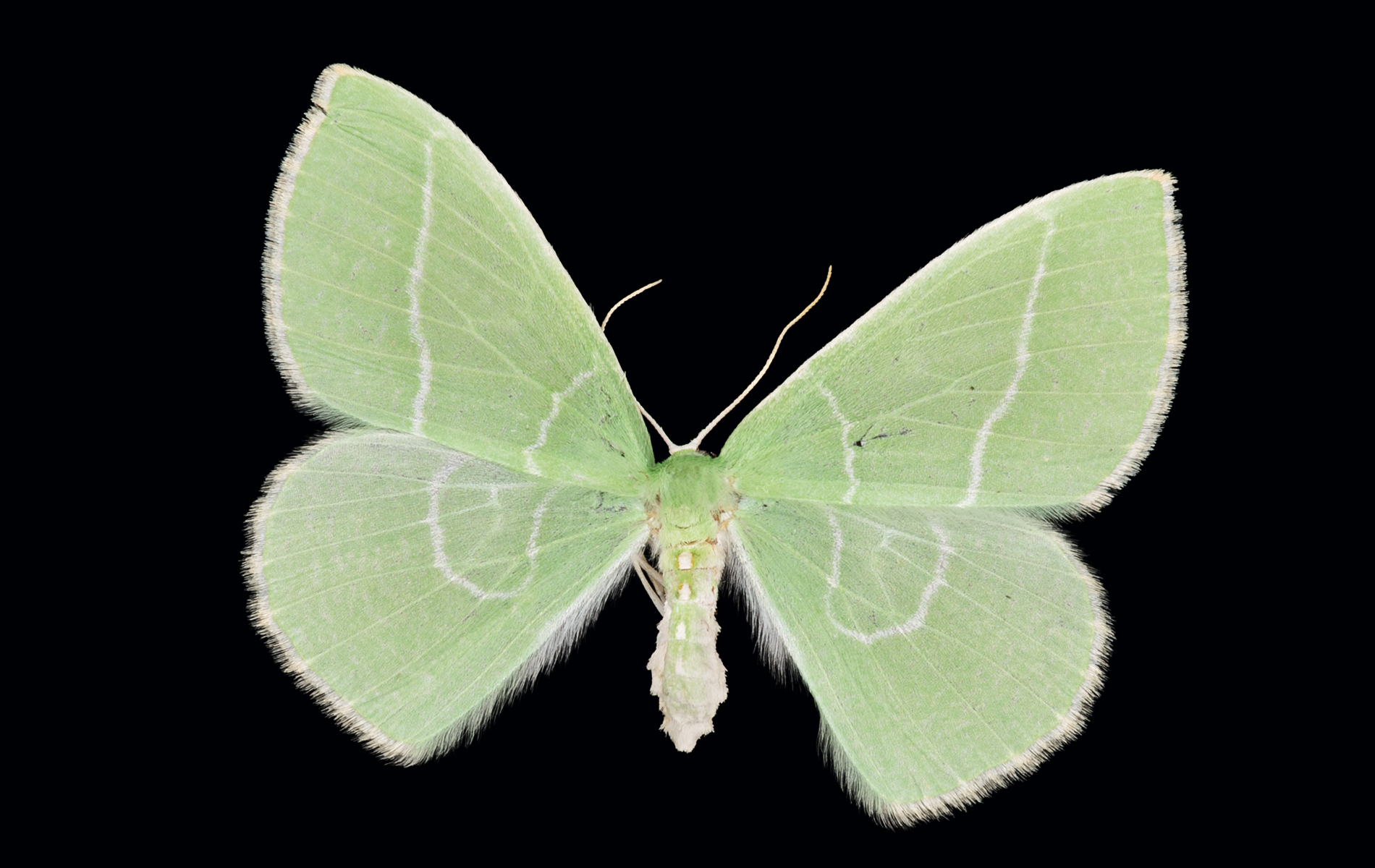
Found locally, the specimen pictured on the cover of Catalyst (ZE.7963) was collected near Golden Gate Canyon State Park in Gilpin County, Colorado in July 2012. This species of moth ranges widely along the Rocky Mountains from Canada to Mexico, and at elevations as high as 7,000-9,000 feet. (Photo/ Rick Wicker)
Moths in the family Geometridae are commonly known as “inchworms” when they are caterpillars. Many geometrid moths are green, gray or brown, and perch on plants with their wings spread flat for camouflage. Nemoria unitaria is the largest “emerald” moth in Geometridae, and its most distinguishing characteristic is the u-shape formed by the two lines form the forewings continuing and joining together on the hindwing.
Found locally, the specimen pictured on the cover of Catalyst (ZE.7963) was collected near Golden Gate Canyon State Park in Gilpin County, Colorado in July 2012. This species of moth ranges widely along the Rocky Mountains from Canada to Mexico, and at elevations as high as 7,000-9,000 feet.
---
After reading this, if you weren’t convinced before that moths are beautiful creatures, hopefully you are now!
Staff and volunteers in the DMNS Entomology collection are constantly working to identify and database both new and historic specimens stored in the collection. Specimen records can be found on the collection’s database, Ecdysis, with more insects being added every day.
Fall 2025
In This Edition
-
The Mystery of the Missing Bison — Solved After 50 Years
This 650-Pound Museum Bison Vanished. Here’s How We Got It Back.
-
A Refresh for Insects and Butterflies
Our Iconic, Toddler-Fan-Favorite Lady Bug on the First Floor has Gotten a ‘Facelift’
-
Understanding Nature’s Most Loveable Giants
The Museum Team is Excited to Host ‘The Secret World of Elephants’
-
6 Marvelous Moths from the Museum’s Entomology Collection
Stunning Moths You Never Knew You Needed to See
-
Connecting Scientists to the Colorado State Legislature
Premiering the Colorado Science & Technology Policy Program & Fellows
Share this:
